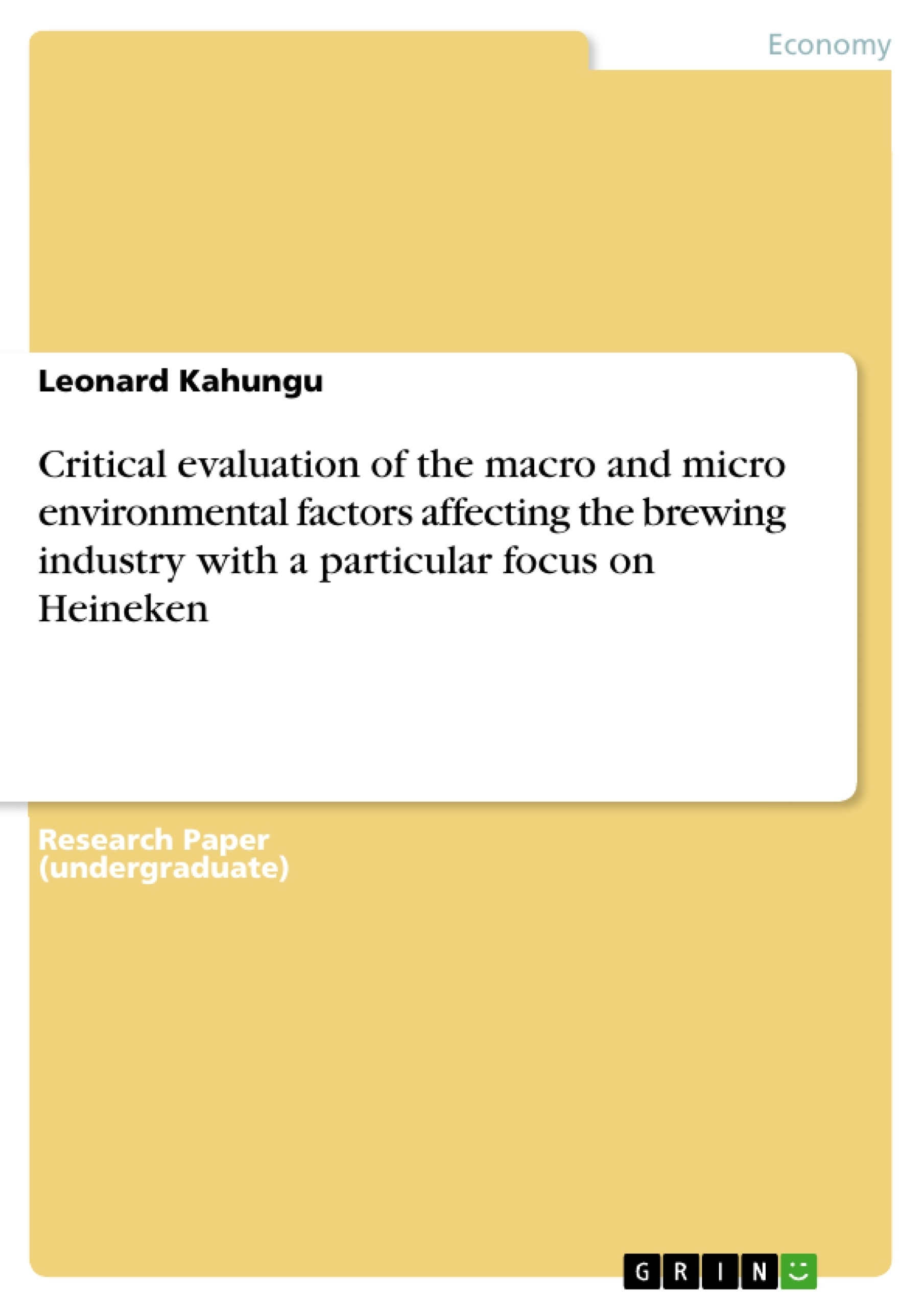Heineken is one of the leading brewing industries in the European and global markets. However, Heineken and other companies in the beer industries are increasingly facing internal and external threats. Thus, the primary aim of this report is to conduct a critical evaluation of the macro and micro environmental factors affecting the brewing industry with a particular focus on Heineken.
The major opportunities and threats facing Heineken will also be established in attempts to establish its ability to survive the contemporary and future market forces while at the same time maintain its competitiveness as illustrated in the past years. Lastly, the report will establish generic objectives that can enhance the profitability of Heineken activities and at the same time increase its ability to navigate through the prevailing environmental challenges.
Inhaltsverzeichnis (Table of Contents)
- Introduction
- Macro Environmental Analysis
- Micro Environmental Analysis
- McKinsey 7-S Model
- Scenario Building and Strategic Recommendations
- Summary and Conclusion
- References
Zielsetzung und Themenschwerpunkte (Objectives and Key Themes)
This report critically evaluates the macro and micro environmental factors affecting the European brewing industry, focusing on Heineken. It identifies key opportunities and threats for Heineken, aiming to establish its ability to navigate future market forces and maintain its competitiveness. The report also establishes generic objectives to enhance Heineken's profitability and navigate environmental challenges.
- Macro and micro environmental factors influencing the European brewing industry.
- Opportunities and threats facing Heineken.
- Strategic recommendations for Heineken to maintain competitiveness and profitability.
- Assessment of Heineken's ability to navigate future market forces.
- Generic objectives to enhance Heineken's profitability.
Zusammenfassung der Kapitel (Chapter Summaries)
- Introduction: This chapter introduces the European brewing industry and its declining consumption trends, highlighting the impact on Heineken and the need for strategic analysis.
- Macro Environmental Analysis: This chapter utilizes the PESTEL model to analyze the macro environmental factors affecting Heineken and the brewing industry in the UK and Europe. It explores factors related to politics, economics, society, technology, environment, and legal issues.
Schlüsselwörter (Keywords)
This report focuses on the European brewing industry, specifically Heineken, and examines macro and micro environmental factors, opportunities, threats, competitiveness, profitability, strategic recommendations, and PESTEL analysis.
- Quote paper
- Leonard Kahungu (Author), 2018, Critical evaluation of the macro and micro environmental factors affecting the brewing industry with a particular focus on Heineken, Munich, GRIN Verlag, https://www.grin.com/document/428634



